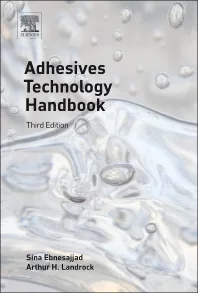Finishing Enviroment:
Hexavalent Chromium: How is it Affecting You?

Chromium is a naturally occurring metal with many uses - and many risks. It has been identified as a human carcinogen that can significantly increase the risk of lung cancer, prompting the Occupational Safety and Health Administration (OSHA) to enact new legislation that reduces the concentration of hexavalent chromium (also known as Chrome VI) an employee is allowed to be exposed to during the workday. These new OSHA standards are extremely pertinent to any business that is using Chrome VI.

Regulatory History
OSHA's original standards for hexavalent chromium, which were enacted in 1971, established an exposure concentration of 52 µg/m³ as the permissible exposure limit (PEL) for the compound. This initial PEL was based on an exposure standard created in 1943 by the American National Standards Institute, which indicated that a daily exposure of no more than 52 µg/m³ would adequately prevent nasal perforations in chromium-exposed workers. The regulation remained unchanged until a number of complaints, including two lawsuits, forced OSHA to re-evaluate its dated standard for hexavalent chromium exposure.To establish a new criterion, several health-based risk assessments were conducted. On October 4, 2004, OSHA proposed that the PEL be lowered to 1 µg/m³. This benchmark, although higher than the 0.25 µg/m³ standard that the Oil, Chemical and Atomic Workers International Union (OCAW) lobbied for in 1993, met with vehement resistance from the chrome industry and was subsequently changed to 5 µg/m³. The sole exception to this standard pertains to the aerospace industry, which has a PEL of 25 µg/m³. According to the risk assessments, an exposure rate of 52 µg/m³ yields a death rate of roughly 1,000 people/year. The 5 µg/m³ standard, which took effect in May of this year, reduces the expected death rate to four people/year.
A Variety of Uses
Even though it is toxic, Chrome VI is a mainstay in the chrome plating, welding and cutting of materials and in the paint industry. Some of the many functions served by Chrome VI include inhibiting corrosion (stainless steel) and producing a shinier, more appealing polish in metals (chrome faucets or bumpers). The compound is also found in plastics, pyrotechnics and pigments for photography. Finally, chrome is a significant additive in many pigments used in paints, requiring many paint manufacturers, as well as paint users, to evaluate potential worker exposure.An alternative to hexavalent chromium can be used in some situations. Chrome exists in two valence states, hexavalent chromium and trivalent chromium, the latter being far less toxic. Many companies are developing methods that will increase concentrations of trivalent chromium materials while lessening concentrations of Chrome VI materials in coating solutions. However, while this method is helpful in some situations, it suffers from a major flaw: Certain activities, such as heating, may convert chromium directly into Chrome VI. While this solution may become prominent in the future, the best course of action at this point is managing, reducing or removing Chrome VI from daily operations.
Evaluating the Risk
Any organization that is uncertain as to whether hexavalent chromium is being used on its site must conduct a detailed evaluation of its materials safety data sheets. To simplify this process, some environmental firms can create a database that will yield a direct search of all the chemicals on a worksite. Such a database will allow employees to enter a chemical's name and receive a printed list of every substance in the facility containing the compound in question.Any business that is using Chrome VI or other toxic chemicals, as defined by OSHA, must assess the current exposure levels through an indoor air quality study. If any chemicals exceed the PEL that OSHA has established, an engineering study should be conducted to identify possible alternative manufacturing processes to eliminate the use of the toxic raw material, along with available control technologies that can reduce or eliminate the potential for employee exposure.
Additionally, any business using Chrome VI must determine the exposure rate of its employees. Two acceptable methods exist for conducting such tests. For the first method, a business can use the indoor air quality assessments to determine the level of exposure in a work site. The second method of testing involves the preparation of a study using representative individuals with the highest potential of exposure. With this method of assessment, the representatives' eight-hour time-weighted average exposure to Chrome VI is determined and evaluated.
Removing the Threat
If hexavalent chromium is discovered during testing, a company should immediately implement new initiatives to manage its employees' daily exposure. An organization above the PEL must prove that it is taking the appropriate measures to remedy the situation. Additionally, the business must notify any employees that have been exposed to hexavalent chromium within 15 days of receiving the test results. Although temporary fixes such as respiratory protection are available, OSHA prefers engineering controls.If the concentration of hexavalent chromium falls into the "action" level, which exists between 2.5 and 5 µg/m³, an organization must continuously monitor and verify its exposures. Ongoing efforts to further reduce exposure will make employees safer and reduce the risk of exceeding the PEL at a later date.
Looking for a reprint of this article?
From high-res PDFs to custom plaques, order your copy today!







